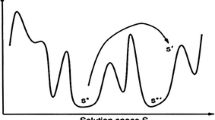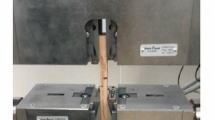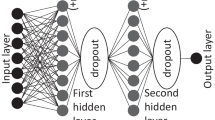Abstract
In the present work, an artificial neural network (ANN) model was developed for predicting the effects of some production factors such as adhesive ratio, press pressure and time, and wood density and moisture content on some physical properties of oriented strand board (OSB) such as moisture absorption, thickness swelling and thermal conductivity. The MATLAB Neural Network Toolbox was used for the training and optimization of the artificial neural network. The ANN model having the best prediction performance was determined by means of statistical and graphical comparisons. The results show that the prediction model is a useful, reliable and quite effective tool for predicting some physical properties of the OSB produced under different manufacturing conditions. Thus, this study has presented a novel and alternative approach to the literature to optimize process parameters in OSB manufacturing process.
Zusammenfassung
In dieser Studie wurde ein künstliches neuronales Netz (ANN) entwickelt, um den Einfluss einiger Produktionsfaktoren, wie zum Beispiel Klebstoffmenge, Pressdruck, Pressdauer, Holzdichte und Holzfeuchte, auf die physikalischen Eigenschaften von OSB, wie Wasseraufnahme, Dickenquellung und Wärmeleitfähigkeit zu ermitteln. Für die Trainingsphase und Optimierung des künstlichen neuronalen Netzes wurde die MATLAB Neural Network Toolbox verwendet. Anhand statistischer und graphischer Vergleiche wurde das ANN Modell mit der besten Vorhersageleistung bestimmt. Die Ergebnisse zeigen, dass dieses Modell ein nützliches, zuverlässiges und effektives Werkzeug zur Vorhersage verschiedener physikalischer Eigenschaften von unter verschiedenen Bedingungen hergestelltem OSB ist. Somit wird in dieser Studie ein neuer und alternativer Ansatz für die Optimierung von Prozessparametern bei der OSB-Herstellung vorgestellt.







Similar content being viewed by others
References
ASTM C 1113–99 (2004) Standard test method for thermal conductivity of refractories by hot wire (platinum resistance thermometer technique). ASTM, USA
Avramidis S, Iliadis L (2005a) Predicting wood thermal conductivity using artificial neural networks. Wood Fiber Sci 37(4):682–690
Avramidis S, Iliadis L (2005b) Wood–water sorption isotherm prediction with artificial neural networks: a preliminary study. Holzforschung 59(3):336–341
Avramidis S, Wu H (2007) Artificial neural network and mathematical modeling comparative analysis of nonisothermal diffusion of moisture in wood. Holz Roh—Werkst 65:89–93
Avramidis S, Iliadis L, Mansfield SD (2006) Wood dielectric loss factor prediction with artificial neural networks. Wood Sci Technol 40:563–574
Canakci A, Ozsahin S, Varol T et al (2012) Modeling the influence of a process control agent on the properties of metal matrix composite powders using artificial neural networks. Powder Technol 228:26–35
Castellani M, Rowlands H (2008) Evolutionary feature selection applied to artificial neural networks for wood veneer classification. Int J Prod Res 46(11):3085–3105
Ceylan I (2008) Determination of drying characteristics of timber by using artificial neural networks and mathematical models. Drying Technol 26(12):1469–1476
Choudhury TA, Hosseinzadeh N, Berndt CC (2012) Improving the generalization ability of an artificial neural network in predicting in-flight particle characteristics of an atmospheric plasma spray process. J Therm Spray Technol 21(5):935–949
Cook DF, Chiu CC (1997) Predicting the internal bond strength of particleboard, utilizing a radial basis function neural network. Eng Appl Artif Intell 10(2):171–177
Cook DF, Whittaker AD (1993) Neural network process modeling of a continuous manufacturing operation. Eng Appl Artif Intell 6:559–564
Cook DF, Massey JG, Shannon RE (1991) A neural network to predict particleboard manufacturing process parameters. Forest Sci 37(5):1463–1478
Cook DF, Ragsdale CT, Major RL (2000) Combining a neural network with a genetic algorithm for process parameter optimization. Eng Appl Artif Intell 13:391–396
Drake PR, Packianather MS (1998) A decision tree of neural networks for classifying images of wood veneer. Int Adv Manuf Technol 14:280–285
Esteban LG, Fernández FG, de Palacios P (2009a) MOE prediction in Abies pinsapo Boiss. timber: application of an artificial neural network using non–destructive testing. Comput Struct 87:1360–1365
Esteban LG, Fernández FG, de Palacios P, Conde M (2009b) Artificial neural networks in variable process control: application in particleboard manufacture. Invest Agrar Sist Recur For 18(1):92–100
Esteban LG, Fernández FG, de Palacios P, Romero RM, Cano NN (2009c) Artificial neural networks in wood identification: the case of two juniperus species from The Canary Islands. IAWA J 30(1):87–94
Esteban LG, Fernández FG, de Palacios P (2011) Prediction of plywood bonding quality using an artificial neural network. Holzforschung 65:209–214
Fernández FG, Esteban LG, de Palacios P, Navarro N, Conde M (2008) Prediction of standard particleboard mechanical properties utilizing an artificial neural network and subsequent comparison with a multivariate regression model. Invest Agrar Sist Recur For 17(2):178–187
Fernández FG, de Palacios P, Esteban LG, Garcia–Iruela A, Rodrigo BG, Menasalvas E et al (2012) Prediction of MOR and MOE of structural plywood board using an artificial neural network and comparison with a multivariate regression model. Compos B 43:3528–3533
Khalid M, Lee ELY, Yusof R, Nadaraj M (2008) Design of an intelligent wood species recognition system. Int J Simul: Syst Sci Technol 9(3):9–19
Kurdthongmee W (2008) Colour classification of rubberwood boards for fingerjoint manufacturing using a SOM neural network and image processing. Comput Electron Agric 64:85–92
Long W, Rice RW (2008) Detection of structural damage in medium density fiberboard panels using neural network method. J Compos Mater 42:1133–1145
Ma X, Zeng W, Tian F, Sun Y, Zhou Y (2012) Modeling constitutive relationship of BT25 titanium alloy during hot deformation by artificial neural network. J Mater Eng Perform 21(8):1591–1597
Mansfield SD, Iliadis L, Avramidis S (2007) Neural network prediction of bending strength and stiffness in western hemlock (Tsuga heterophylla Raf.). Holzforschung 61(6):707–716
Moya L, Tze WTZ, Winandy JE et al (2009) The effect of cyclic relative humidity changes on moisture content and thickness swelling behavior of oriented strand board. Wood Fiber Sci 41(4):447–460
Nordmark U (2002) Knot identification from CT images of young Pinus sylvestris sawlogs using artificial neural networks. Scand J Forest Res 17:72–78
Ozsahin S (2012) The use of an artificial neural network for modeling the moisture absorption and thickness swelling of oriented strand board. BioResources 7(1):1053–1067
Packianather MS (1997) Design and optimization of neural network classifiers for automatic visual inspection of wood veneer. Ph. D. Thesis, University of Wales
Packianather MS, Drake PR (2000) Neural networks for classifying images of wood veneer. Part 2: Int. J Adv Manuf Technol 16:424–433
Packianather MS, Drake PR (2004) Modelling neural network performance through response surface methodology for classifying wood veneer defects. Proc Inst Mech Eng Part B: J Eng Manuf 218(4):459–466
Packianather MS, Drake PR (2005) Comparison of neural and minimum distance classifiers in wood veneer defect identification. Proc Inst Mech Eng Part B: J Eng Manuf 219(11):831–841
Packianather MS, Drake PR, Pham DT (2008) Feature selection method for neural network for the classification of wood veneer defects. In: Proceedings of the World Automation Congress, Waikoloa, September 28–October 2 (1–3):790–795
Pham DT, Sagiroglu S (2000) Neural network classification of defects in veneer boards. Proc Inst Mech Eng Part B: J Eng Manuf 214(3):255–258
Rojas G, Ortiz O (2010) Identification of knotty core in pinus radiata logs from computed tomography images using artificial neural network. Maderas, Ciencia y Tecnologia 12(3):229–239
Samarasinghe S, Kularisi D, Jamieson T (2007) Neural networks for predicting fracture toughness of individual wood samples. Silva Fennica 41(1):105–122
Thoemen H, Irle M, Sernek M (2010) Wood–Based Panels: An Introduction for Specialists. Brunel University Press, London
Tou JY, Lau PY, Tay YH (2007) Computer vision–based wood recognition system. In: Proceedings of International Workshop on Advanced Image Technology (IWAIT). Bangkok, Thailand, p 197–202
TS 642/ISO 554 (1997) Standart atmospheres and/or testing; Specifications
TS–EN 322 (1999) Wood–Based panels, determination of moisture content. TSE, Ankara
TS–EN 323 (1999) Wood–Based panels, determination of density. TSE, Ankara
Wu Q (1999) In–plane dimensional stability of oriented strand panel: effect of processing variables. Wood Fiber Sci 31(1):28–40
Wu H, Avramidis S (2006) Prediction of timber kiln drying rates by neural networks. Drying Technol 24(12):1541–1545
Wu Q, Piao C (1999) Thickness swelling and its relationship to internal bond strength loss of commercial oriented strand board. Forest Prod J 49(7/8):50–55
Xu X, Yu ZT, Hu YC, Fan LW, Tian T, Cen KF (2007) Nonlinear fitting calculation of wood thermal conductivity using neural Networks. Zhejiang University Press 41(7):1201–1204
Cook DF, Whittaker AD (1992) Neural network models for prediction of process parameters in wood products manufacturing. In: proceeding of first Industrial Engineering Research Conference. Chicago, 20–21 May, p. 209–211
Yapici F (2008) The Effect of Some Production Factors on The Properties of OSB Made from Scotch Pine (Pinus sylvestris L.) Wood. Ph. D. Thesis, Zonguldak Karaelmas University
Yildirim I, Ozsahin S, Akyuz KC (2011) Prediction of the financial return of the paper sector with artificial neural networks. BioResources 6(4):4076–4091
Zhang D, Sun L, Cao J (2006a) Modeling of temperature–humidity for wood drying based on time–delay neural network. J For Res 17(2):141–144
Zhang J, Cao J, Zhang D (2006b) ANN–based data fusion for lumber moisture content sensors. Trans Inst Meas Control 28(1):69–79
Zhu XD, Cao J, Wang FH, Sun JP, Liu Y (2009) Wood defect identification based on artificial neural network. Comput Intell Intell Syst 51:207–214
Acknowledgments
The author is thankful to Dr. Fatih Yapici, Department of Furniture and Decoration, Technical Education Faculty, Karabuk University, Karabuk, Turkey, for providing the database used in the paper and for many fruitful discussions.
Author information
Authors and Affiliations
Corresponding author
Rights and permissions
About this article
Cite this article
Ozsahin, S. Optimization of process parameters in oriented strand board manufacturing with artificial neural network analysis. Eur. J. Wood Prod. 71, 769–777 (2013). https://doi.org/10.1007/s00107-013-0737-9
Received:
Published:
Issue Date:
DOI: https://doi.org/10.1007/s00107-013-0737-9




